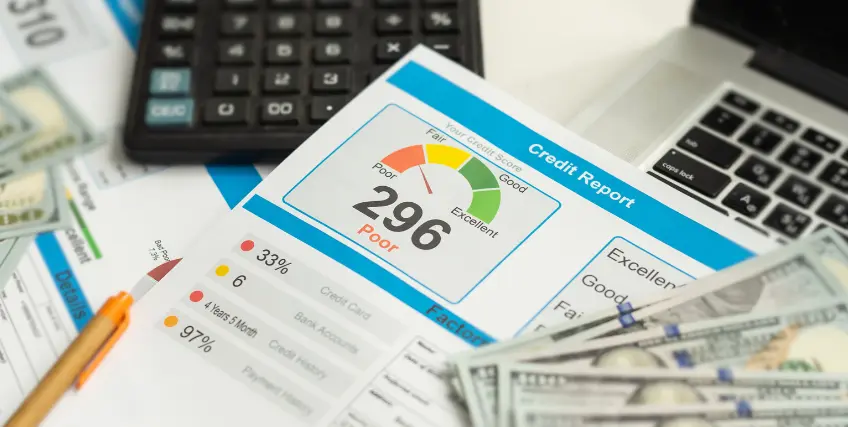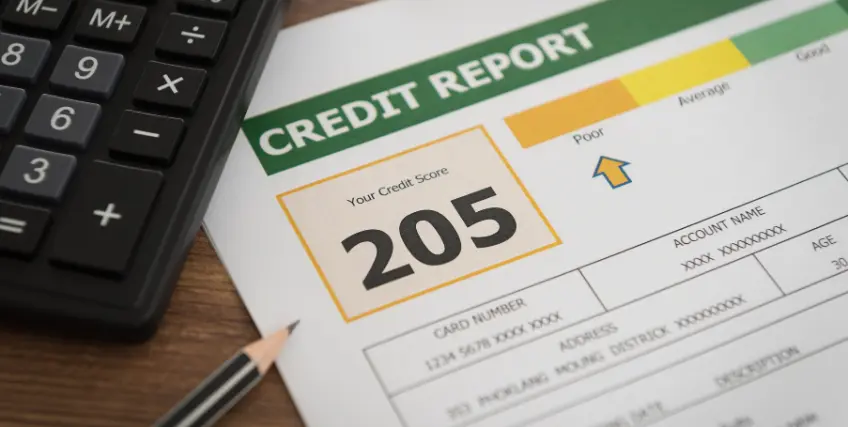Definitive Guide to Inflation for Small Business Owners
January 09, 2025 | Last Updated on: January 09, 2025

Inflation can acutely impact small businesses in many ways. Growing a small business is a challenging enough endeavor for most small business owners, without even considering how the damaging effects of inflation can compound that pain.
The domino effect of inflation on a small business owner is that not only does everything cost more, but hiring more employees or sustaining a company's growth becomes much more difficult, if not unattainable. Small business owners financing their companies with their own personal savings are especially exposed to risk if inflation reaches unsustainable levels.
When inflation is rampant, entrepreneurs may want to seek small business financing options from traditional loans to merchant funding.
In this article:
- Learn the causes of inflation and what businesses can do to prepare for inflationary periods.
- Explore the impact of inflation on a business.
- Discover ways to navigate inflation like merchant loans.
What is inflation?
Let’s first define exactly what “inflation” is. Many consumers, let alone small business owners, have a cursory idea of what it is, especially if they came of age in the early-mid 1970s and heard the term constantly to describe the state of the post-Watergate American economy.
When the price of goods and services rises over a period of time, reducing the purchasing power of the currency, that is inflation. A rise in inflation rates north of 5 percent can be crushing to everyday consumers and a death blow to some small businesses. A sustained rise in the overall price level for goods and services is a simplified definition of inflation.
The rate of inflation is the increase in prices during a specified period. If inflation is at an annualized rate of 3%, a product, good or service that costs $1,000 now would, in theory, cost $1,030 the following year. Inflation reduces the value of every dollar in your pocket or your bank account.
What causes inflation?
Understanding the causes of inflation might not be enough to save a business that’s suffering because of it, but it can help you stay prepared. Inflation can occur for many reasons, including:
- Demand outstrips supply: When the demand for a product or service is greater than the actual supply of that entity, inflation can ensue. It’s also the result of what happens if supply is restricted but demand is not. This is exemplified by the rise in gas and energy prices when oil refineries are shut down or drilling ceases.
- Supply chain disruptions: According to morningconsult.com, supply chain disruptions have been a contributing factor to recent rising inflation.
- Excess money: An increase in money supply causes a devaluation of the dollar, and the result is that a dollar won’t go nearly as far in its purchasing power as it would otherwise.
Impact of inflation on business
Large companies have greater financial resources than small ones. As such, regardless of the causes of inflation, the impact of inflation tends to be larger on small businesses than large ones.
Rising costs in a wide swath of the economy can affect every aspect of a small business. Businesses may see rises in the cost of labor, raw materials, and interest. This can have a range of impacts on a small business.
- Difficulty retaining labor: When inflation starts to have a noticeable effect on the cost of living employees will begin to see that their paycheck doesn’t go nearly as far for them as it used to. This may lead to demands for cost-of-living increases or employees leaving for larger companies.
- Increased production costs: Cost-push inflation is the result when prices increase as a result of more significant production costs, such as raw materials and wages. The result: consumers (and producers) end up paying higher prices, whether they can afford them or not.
- High interest rates: Price increases cause banks to be repaid in money that was worth less than when they made a particular loan. This causes banks to charge higher interest rates. If a business owner takes out a 20-year term loan during a period of high inflation, they’ll likely pay a lot more over the full term of the loan than if they took out the loan when inflation was less severe. Merchant funding tends to be more expensive when inflation is high.
- Diminished growth potential: The salaries of an owner or partner in a small business eat up a bigger percentage of the company’s overall revenue, which in turn affects the business’ ability to expand under these circumstances.
- Restricted cash flow: Inflationary forces can greatly impact a small business's cash flow. If your company is affected by inflation, it means that so are your clients, creating a chain reaction where they might not pay you what your company is owed in a timely manner. If enough of your clients are slow to pay you on time, then your business may not have enough cash flow to pay your expenses or your employees.
- Reduced inventory: The higher the inventory cost, the more difficult it will be for your business to carry as many products as it previously could. That may force you to raise prices, turning off your customers.
While all small companies should certainly keep a certain amount of cash in their bank accounts, keeping too much cash on hand could decrease one’s buying power because of the effects of inflation. A very general rule of thumb is that a small business should keep somewhere between three and six months’ worth of cash on hand.
How can a small business deal with inflation?
There is no easy answer or simple solution for a small business’s ability to counter the effects of inflation. That said, a few principles could be helpful to the entrepreneur struggling against the tide of rising costs and address business needs.
- Study your business’ profit margins: How much have your own profit margins dwindled during an inflationary period? Once you’ve come up with a figure, study ways that you might be able to boost those margins once again.
- Cut expenses: Are there services your business pays for regularly that it does not use regularly? Is it a fundamentally necessary cost or something that can be reduced or eliminated entirely?
- Reduce overhead: Is your business housed in a facility that’s larger than the amount of space you really need? Moving to a smaller facility or to a less expensive location would reduce your overhead costs.
- Change suppliers: Do you depend on one supplier? Alternating suppliers, or finding a domestic supplier to replace a supplier whose goods come from abroad might be a partial remedy to supply chain issues. Stocking up in on inventory and attempting to lock in a long-term price now might save your business some costs if prices continue to go up.
- Raise prices: Your customers won’t like it, but there are incremental methods of effecting a price hike that will reduce the amount of “sticker shock” your customers will experience.
- Seek loans or merchant funding: Many short-term loan products, from merchant loans like cash advances to working capital loans, are designed to help small businesses deal with issues like inflation. Some can even provide same day funding.
What short-term funding options can help with inflation?
There are many types of financing options available to small businesses dealing with inflation, from traditional bank loans to alternative loan options. Types of loans that small businesses might be able to secure quickly include:
Business Line of Credit
Sometimes, a business line of credit can be approved in as little as 24 hours or less. Depending on the lender, you might only need a credit score of 500 to qualify for a business line of credit.
When a lender provides pre-approved funding with a maximum credit limit, that is known as a business line of credit. If the borrower is approved for this line of credit, funds can be accessed whenever they are needed until the established credit limit has been reached.
Because the borrower is only paying interest on the amount that he or she withdraws, a business line of credit can be advantageous for business owners who are uncertain of the amount of funding they will actually require or when they might need it. Lines of credit also tend to have slightly better interest rates than business credit cards.
Short-Term Loan
Often referred to as working capital loans, a short term loan is one in which the borrower receives an upfront lump sum payment and then repays the loan according to the repayment terms. Some short-term loans allow the borrower to make extra payments to pay it off sooner. However, some actually come with penalties for early repayment. Short-term loans generally have a term of 12 months or less.
Payments on short-term loans are required frequently — sometimes once a week or, in some cases, every day.
Although the credit requirements for short-term loans are not as strict as those for regular term loans, the frequent repayment schedule may be burdensome for someone in a new business without a lot of cash flow at that moment. You’ll have to show detailed financial records and bank statements, and have a strong credit history to qualify. However, a businessperson who needs a loan in a hurry still might opt for a short-term loan because it may be easier to secure than other forms of financing.
The biggest issue with traditional business loans is that the application process and underwriting tend to take a long time. Entrepreneurs need money quickly to reduce the impact of inflation on a business.
Invoice Factoring
For companies that have unpaid invoices. Invoice factoring is a merchant funding method where you sell your accounts receivable at a discount for a lump sum cash amount. at a discount for a lump sum cash amount.
A method of securing working capital that is a little different than applying for a loan, invoice factoring is the process of selling invoices at a discounted rate to a factoring company and receiving a lump sum of cash that can be used as working capital.selling invoices at a discounted rate to a factoring company and receiving a lump sum of cash that can be used as working capital.
After assessing the risk of financing the business owner’s invoice, the factoring company collects payments from the business’ customers over a span of between one and three months. If a company sells something to a customer, but that customer cannot pay off the invoice right away, there’s a gap in time that could create a shortfall for the business owner. The lump sum that the business would receive by undertaking the invoice factoring process would cover the shortfall and solve the problem of cash on hand.
Merchant Cash Advance (MCA)
A type of merchant financing, an MCA is when a merchant cash advance company gives a borrower an upfront lump sum of cash in exchange for a percentage of future credit card sales and debit card sales. Instead of an interest rate, the company charges a factor rate, which multiplies the principal loan amount by a percentage to reach a final repayment number.
This is a good option for business owners with bad credit who can’t get approved for traditional business financing or those who need money very quickly as they have less strict eligibility requirements. Likewise, you may be able toget funding in as little as one business day. However, factor rates and confusing terms may lead to high costs over the full term of the MCA.
SBA Loan
The U.S. Small Business Administration (SBA) offers commercial financing backed by the SBA through its SBA 7(a) loan program. The most common type of SBA loan, an SBA 7(a) loan, assists businesses in purchasing or refilling owner-occupied commercial properties up to $5 million and gives the business owner a chance to borrow funds for working capital.
The Bottom Line
The causes of inflation are outside of a small business’s control. However, you can control the impact of inflation on your small business. By making informed business decisions like reducing expenses and increasing prices, you can help your business stay profitable. Likewise, merchant funding options can help your business thrive through tough times.
FAQs
What is inflation?
Inflation measures the rise in the price of goods and services over time. Inflation is natural in a healthy economy, but when it happens too fast, it can cause problems.
What causes inflation?
In addition to the simple progression of time, some causes of inflation include supply outstripping demand and excess money being in circulation.
What is the impact of inflation on small businesses?
Fast-rising inflation can have many impacts on small businesses. As costs rise, businesses may have to spend more to produce the same goods and services, cutting into their bottom line or forcing them to raise prices. Likewise, labor may become more expensive and interest rates on loans will be higher.
What can small businesses do to combat inflation?
Some of the most common actions small businesses take to reduce the impact of inflation include cutting expenses, reducing overhead, raising prices, and taking out loans against future sales.
What are some merchant funding options to help deal with inflation?
Some of the alternative business funding options for small businesses dealing with inflation include merchant cash advances (MCAs), invoice factoring, and business lines of credit.
Frequent searches leading to this page
business cash advance, merchant funding, mca funding, business loan, small business loans for women
Recent Articles
Related Articles

Can You Renegotiate Terms on MCA Cash Financing After a Default? What Business Owners Need to Know
November 27, 2024

Business Loan or Merchant Loan? Understanding Loan Options for Your Business
November 25, 2024

Avoiding the Debt Trap: How Stacking MCA Business Financing Can Hurt Your Business Credit
November 7, 2024

Why MCA Business Funding May Be Ideal for Retailers Looking to Expand Inventory
November 5, 2024

Merchant Cash Advance vs. Asset-Based Lending: Which is Right for Your Business?
January 10, 2025

Merchant Cash Advance vs. Traditional Business Loans: Which is Right for Your Business?
January 10, 2025

Merchant Cash Advance vs. Line of Credit: Which is Right for Your Business?
January 9, 2025

5 Things Every Small Business Owner Wishes They Had Known When They Started
January 9, 2025

































